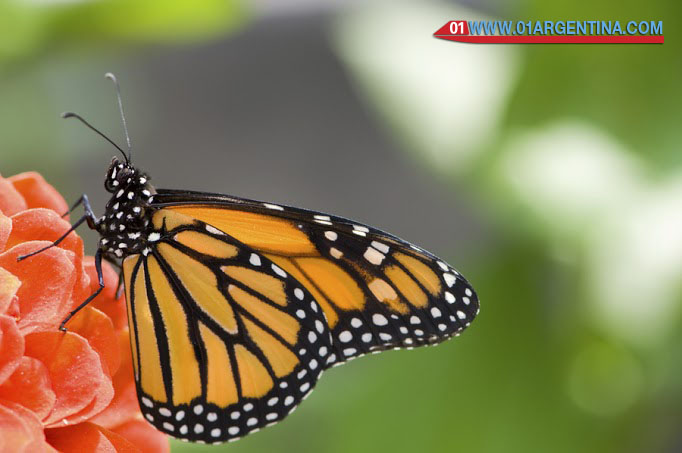
Observing butterflies in their natural environment with our Iguazu Ecological tour requires a good deal of practice and patience. Since butterflies are biological indicators, learn from them can help us better understand the ecology of the missionary forest conservation and appreciation.
In the province of Misiones they are very conspicuous and does not take much effort to find them, unless the environmental conditions are not suitable. If the temperature and humidity are high and the day is sunny, it is the ideal time. If it is hot but cloudy activity will surely be lesser extent on a sunny day.
Rainy and cold days there is almost butterflies, like the days or months with drought, or when the temperature exceeds 40 ° C.
The best times to find them are the hottest hours of the day, from 10 am to 16 pm, although the early hours of the morning may be better to try to photograph them.
There are a few species that are easier to see at dawn or dusk (like the owl butterfly), but can also be found in shady places during the day. We can find all year but September to May and more species will be found copies, peaking in the summer months. After a rain, when the temperature goes up more copies which may emerge from their chrysalises moisture is observed.
Butterflies number about 170,000 species worldwide, of which only about 10% are diurnal. Make, in insects, Lepidoptera order, only outnumbered by Coleoptera (beetles). In our country almost 1,300 diurnal species are known and are estimated to number several thousand night. The fauna is diverse butterflies in Misiones jungle, home to three quarters of the species named in Argentina.
Recommendations to contemplate and know them:
– The best places to find them are in forest edges and clearings where there is enough sunlight although there are many species of undergrowth that almost never find outside the forest.
– Certain species of flowers are good places where butterflies can be observed even though many do not feed on nectar and only turn to animal dung, rotting fruit and tree sap exudates.
– Once you have located the species should be approached as slowly as possible without making sudden movements, especially the butterfly not cover our shadow.
– If possible take photo of both faces of the specimen.
– It is useful to note in the book all aspects that may be more relevant, such as time, date, time, temperature, location, species attempt conduct, flowers or plant which is perched, etc.
– These data can be of great help later identify butterfly if it was not possible to identify the place of discovery. It should begin to familiarize yourself with families and subfamilies.
– It’s best to go first to a place near our home to go to the jungle, where there are many more species and more difficult to recognize.
– In places like Misiones it is almost impossible to identify all species seen in one day.
Butterflies, their life and their role in the environment
Butterflies do not live only one day, but weeks or even months, to play an essential role for the environment: the pollination of forest plants. There are approximately 900 species of butterflies flying in the jungles of northeastern Argentina. Blue, Red, Yellow and endless metallic colors fly fragile the highly endangered. These colorful insects are covered with tiny scales that dress in unimaginable colors, and infinite shades of blue, attractive textures and even transparency.
Among the largest and most colorful we can name the morpho gender (see photo), as Porá butterfly (“beautiful” in you Guarani) and national butterfly, blue and white, the Morotí (the Guarani, “white”) . They are also very popular large limoneras (see photos), with fast flying and distrustful.
Butterflies feed on nectar from flowers, a sugar-rich aqueous solution. However, due to the strict diet, they need add other nutrients, such as natural salts. That is why we often settle on the skin of people to suck sweat and assemblies are common on the banks of rivers and red puddles in the chopped inside the jungles.
Because of the close relationship between these insects and the highly endangered, it is essential to the conservation of butterflies to maintain healthy and vigorous Argentine native forests, with all that that entails and includes: biodiversity, identity, culture and resources.







